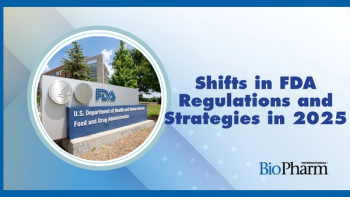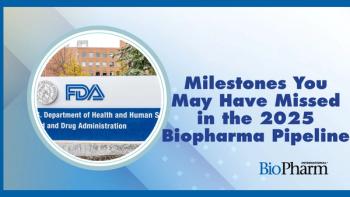
- BioPharm International-11-01-2020
- Volume 33
- Issue 11
Pandemic-fighting Drugs in Shortage, Again
Resolving drug shortages starts with identifying the source of the problem.
Rising numbers of confirmed cases of COVID-19, hospitalizations, and deaths as the last quarter of 2020 began signaled what may be the predicted second wave of the global coronavirus pandemic. For regions that experienced high infection and fatality rates in the spring, a dreaded sense of “here we go again” seemed to be taking hold. In my home region of the Northeast United States, healthcare experts and government officials weighed the economic considerations of keeping businesses and schools open and complaints of “pandemic fatigue” with the potential for the virus to spread rapidly.
Fortunately, healthcare professionals have made progress in identifying treatment options and protocols to treat COVID-19 patients, improving the odds of survival. Diagnostic testing has improved from the early days of the pandemic but is, according to many public health experts, insufficient to provide crucial information to address outbreaks in a timely manner. And many people—but again, not enough—adhere to basic public health messages to wash hands, wear face coverings, and to practice social distancing.
Are we better prepared?
One way to assess US preparation is to review action taken to resolve previous health emergencies. One lesson the pharma industry has not learned—for nearly two decades—is to effectively resolve drug shortages.
A recent report from the Center for Infectious Disease Research and Policy at the University of Minnesota (1) noted that 29 of 40 critical drugs used to treat patients with COVID-19 have experienced shortages, including propofol, albuterol, midazolam, hydroxychloroquine, cisatracurium, rocuronium, fentanyl, azithromycin, and vancomycin. A rapid increase in the demand for these drugs, coupled with production and supply interruptions related to the pandemic, and trade bans imposed by foreign manufactures were contributing factors to the shortages.
Other factors, such as quality-related production delays, lack of manufacturing capacity, raw materials shortages, or business decisions to stop making a drug are familiar causes for shortages. While drug shortages are tracked by FDA, the root cause often is not apparent due to a lack of supply chain transparency, the report noted.
The US dependence on unknown foreign suppliers for raw materials means patients do not know where the ingredients in their drugs are coming from. FDA lacks the information needed to anticipate the impact a disruption in the supply chain may have on the US drug supply.
Many consumer products—from fruit and vegetables to clothing to electronics—note the country of origin. An analysis of more than 40,000 prescription drug product labels, however, found that more than two-thirds did not report the name of the manufacturer or where it was made (1).
Mapping the supply chain
The report recommends initiatives to address shortages, including the following:
- A national entity to analyze, predict, and prevent drug shortages
- A map of the US drug supply chain, including the source of starting materials and where APIs and finished drugs are manufactured
- Prescription drug profiles detailing supply chain information, quality, and regulatory information listed on a consumer website
- Ongoing research on supply chain resiliency and a warning system to alert for potential shortages.
The authors offer good suggestions; however, the initiatives must work in concert with patient demands for lower prices for safe, effective drugs, drug company profit goals, and the reality that the industry depends on a global marketplace to succeed.
The pandemic may kick-start a number of changes in the way drugs are made. Identifying and qualifying the supply chain deserves a top spot on the list.
Reference
1. S. W. Schondelmeyer, et. al., COVID-19: The CIDRAP Viewpoint, Part 6 Ensuring a Resilient US Prescription Drug Supply, Report, Oct. 21, 2020.
About the Author
Rita Peters is editorial director of BioPharm International.
Article Details
BioPharm International
Vol. 33, No. 11
November 2020
Page: 6
Citation
When referring to this article, please cite it as R. Peters, “Pandemic-fighting Drugs in Shortage, Again," BioPharm International, 33 (11) 2020.
Articles in this issue
about 5 years ago
Pinpointing Bioprocess Development Successabout 5 years ago
Control Strategies for Perfusion Cell Cultureabout 5 years ago
What’s New in Downstream Technologiesabout 5 years ago
Single-Use Sensors Increase Process Understandingabout 5 years ago
Complex Manufacturing Processes Prompt New Inspection Methodsabout 5 years ago
Complex Modalities Require More Sensitive Adventitious Agent Testingabout 5 years ago
Digital Strategies for Biopharma Manufacturingabout 5 years ago
Bioprocess Scale-Up: Getting Smarter, Soonerabout 5 years ago
COVID-19 Vaccine Distribution Raises Multiple ChallengesNewsletter
Stay at the forefront of biopharmaceutical innovation—subscribe to BioPharm International for expert insights on drug development, manufacturing, compliance, and more.




